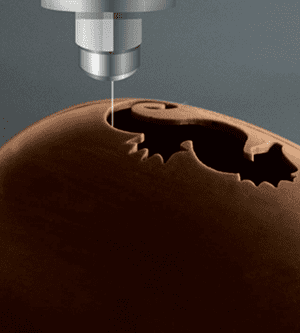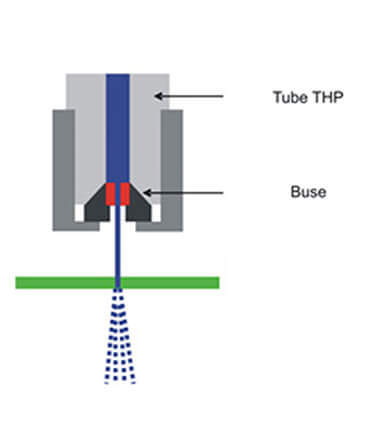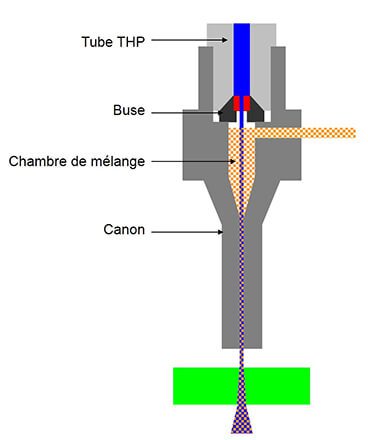- Cut thicknesses up to 150 mm.
- Cut homogeneous, heterogeneous, or composite materials.
- Cold cutting without heat release, without affecting the structure of materials, and without releasing toxic gases in the case of organic materials.
- Process highly suitable for 2, 3, or 5-axis systems guided by digital control system or robots not requiring tooling.
- Possibility of controlling several cutting heads at the same time.
Waterjet cutting principle
The advantages of waterjet cutting technology
The principle

Most materials can be cut using a waterjet spraying at very high speed (2 or 3 times the speed of sound). This speed is achieved by forcing a water flow through a nozzle of diameter measuring a few tenths of a millimetre, with pressures from 2000 to 4000 bar. This cutting technology can use pure water or abrasive-charged water.
Cutting soft materials using pure water

Pure water is sufficient for soft materials (foam, soft PVC, rubber, leather, textiles, paper, etc.).
Water particles leave the nozzle as a fine and coherent jet, sprayed at very high speed against the surface of the material to be cut, in order to obtain a clean cut.
Abrasive cutting

For hard materials (metals, rigid plastics, composite materials, tiles, concrete, etc.), pure water is no longer sufficient. An abrasive must be added to it. In this mode, the cutting power comes from the speed of the abrasive particles. In this case, the water is merely the carrier fluid that propels these particles. For this purpose, a mixing chamber and a focusing tube are added to the cutting head.

